Welcome, seekers of shadow, to a journey into the mysterious realm of the dark feminine. Often misunderstood, frequently feared, but never powerless—the dark feminine energy is a force of rebirth, intuition, and deep self-possession. This is your dark feminine guide to some of the most iconic dark goddesses in mythology, and a reminder that sometimes, the greatest light comes from within the dark.
What does it mean to be dark feminine? It means embracing your depth, your desire, your danger, and your power—without apology.
Hecate: The Goddess at the Crossroads
Hecate, the ancient Greek goddess of the crossroads, magic, witchcraft, and the night, is often depicted with three faces, representing her dominion over the earth, sea, and sky.
Hecate, embodies the dark side of feminine energy. As a guide through liminal spaces—both literal and spiritual—Hecate teaches us to trust our own inner vision when the path ahead is unclear. Her symbols: torches, keys, and dogs, represent illumination, access, and protection.
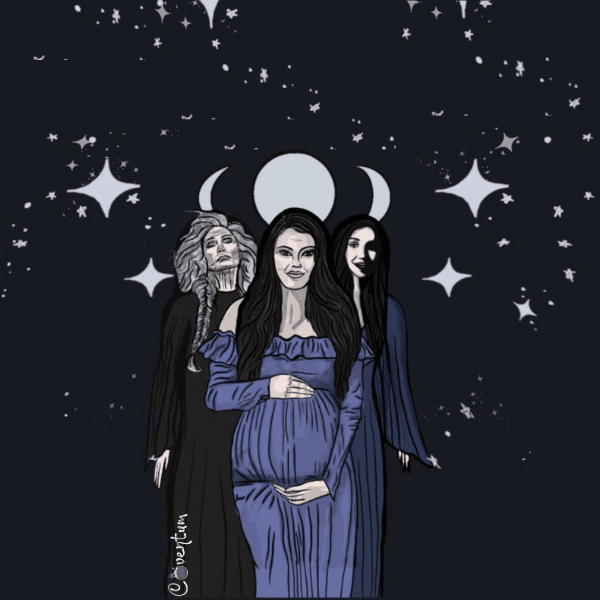
If you connect with dark feminine energy traits like intuitive power, independence, and a connection to mystery, Hecate walks beside you.
Regarded as the queen of ghosts, Hecate is a protector of women, particularly during childbirth, and a guide during spiritual transitions. Her symbols include torches, keys, and dogs. Her dark persona arises from her association with necromancy and her role as a guide to the underworld.
🌓 Wear the triple aspect of Hecate with our Triple Moon Necklace embodying her role as guide through transitions and shadow.
Circe: Turning Myths into Legends (and Men into Pigs)
Circe, daughter of the sun, wields her dark feminine energy through transformation and enchantment. She is the witch archetype who refuses to be tamed. Her magic is unapologetic, personal, and fierce—the ultimate in dark feminine manifestation. With her wand and her cup, she holds both destruction and healing.
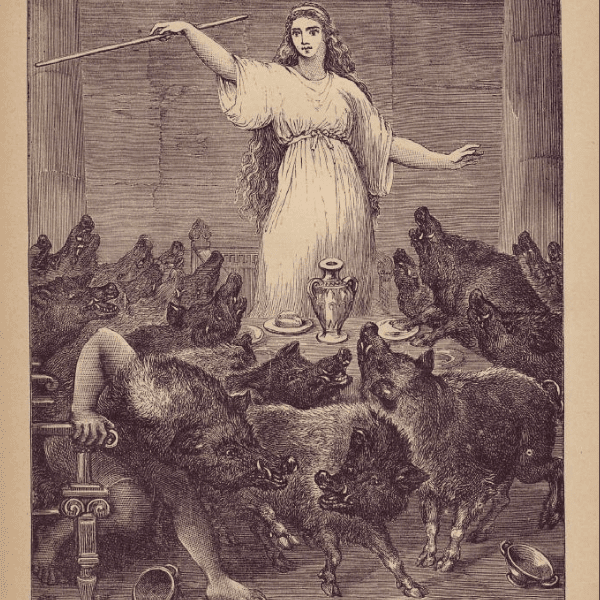
Circe teaches us the art of boundaries, self-transformation, and how to wield our energy wisely.
Circe is a sorceress renowned for her knowledge of potions and herbs. In Homer’s Odyssey, she transforms Odysseus’s crew into swine, embodying the fear of the unpredictable power of magic. However, Circe is also a symbol of transformation and self-realization. Her symbols include the wand and the cup, representative of her mastery over magic and transformation.
Persephone: The Blooming Badass

Queen of the Underworld and daughter of spring. Persephone embodies the dark feminine aesthetic: soft, deadly, beautiful, and powerful. As a symbol of seasonal death and rebirth, her energy holds paradox—innocence and wisdom, captivity and choice. Her dark feminine symbol is the pomegranate, dripping with meaning.
To channel Persephone is to honor both your darkness and your bloom.

As the Queen of the Underworld, embodies the cycle of death and rebirth. Kidnapped by Hades, she becomes the queen of the underworld for half the year, symbolizing the barren winter months, and returns to her mother Demeter, the goddess of harvest, for the rest of the year, signifying spring’s renewal. Her symbols include the pomegranate and the torch, symbolizing rebirth and enlightenment.
Freya: Love, War, and Everything in Between
Freya is both lover and warrior, ruling over beauty, battle, and death. She owns her sensuality and wields it like a weapon. She is magic, prophecy, and autonomy embodied. Her Brísingamen necklace is a sacred artifact and a literal answer to the question: What makes a necklace feminine?

Freya’s vibe is the ultimate expression of black divine feminine energy: unapologetically magnetic, yet destructive when crossed.
While she embodies beauty and desire, she is also a fierce warrior and ruler over Folkvangr, where half of those who die in combat go (the other half go to Valhalla). Freya’s darker aspects come from her association with death and her propensity for magic and prophecy. Her symbols include the boar, falcon, and the Brísingamen necklace, signifying her multifaceted nature.
Lilith: Serpent Charmer & Feminist Icon
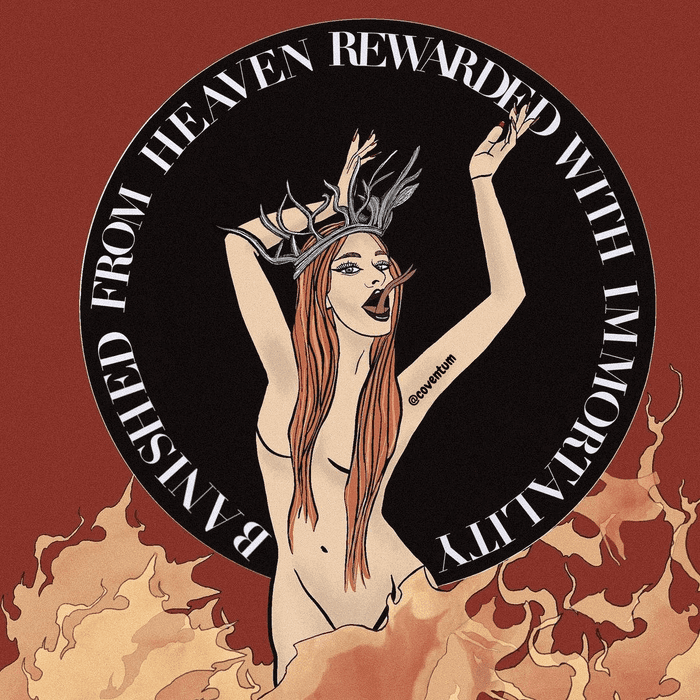
Lilith is the original rebel. Refusing to submit to Adam, she was cast out and rewritten as a demon—but her story didn’t end there. She resurfaces today as a dark feminine goddess, an icon of shadow work, sexuality, and sovereignty. Her dark feminine psychology lies in reclaiming the parts of ourselves labeled too wild, too loud, too much.
Lilith symbolizes the first woman who rebelled against her ordained role in Jewish folklore. She is often depicted as a nocturnal seductress or a demon who brings harm to newborn children. However, Lilith is also seen as a symbol of female independence and power. Her symbols include the owl, representing her connection to the night, and the serpent, symbolizing wisdom and transformation.
Lilith’s symbols? Owls, serpents, and night winds. Her essence is the answer to Who is the goddess of dark feminine?
And if you want to claim your shadow you can wear her, literally, with our Lilith Necklace!
Navigating the Night: Nyx

Nyx, the enigmatic Greek goddess of the night, was born from the primordial chaos that preceded the universe. As one of the first deities to emerge, she became the mother of many other gods and goddesses, including Hypnos (sleep) and Thanatos (death). Nyx’s dark nature stems from her association with the impenetrable blackness of the night, when the world is shrouded in mystery and hidden secrets. Her symbols include the veil, representing her ability to obscure and conceal, and the crescent moon, a symbol of her nocturnal dominion. Both revered and feared by mortals and gods alike, Nyx embodies the power of darkness and the unknown, reminding us that there is magic and wisdom to be found even in the shadows.
The Powerful One: Sekhmet
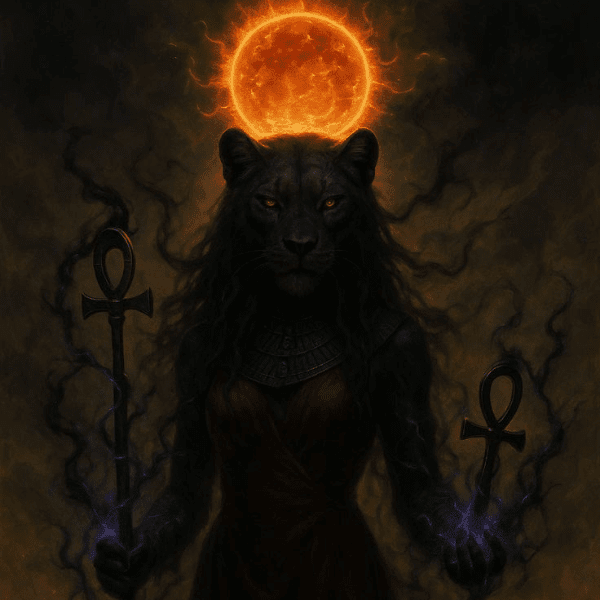
She was the lioness-headed goddess of war and destruction. She was believed to be the daughter of the sun god Ra and was sent by him to punish humanity for its rebellion against the gods. According to the myth, Sekhmet’s bloodlust was so fierce that Ra had to trick her into drinking a pool of beer dyed red to resemble blood, causing her to become drunk and fall asleep to prevent her from wiping out humanity.
Sekhmet represents the destructive force of the sun and is often associated with plagues and illnesses. However, in a balancing act typical of Egyptian mythology, Sekhmet was also seen as a healer for those diseases and a protector of the Pharaohs. Thus, while she was feared for her destructive aspect, she was also respected and revered.

Channel Sekhmet’s fire with our Ankh Earrings—a symbol of life, death, and divine power.
Kali: A Fierce Warrior
Born from the furrowed brow of the goddess Durga during a fierce battle against demonic forces, Kali is a fierce warrior, a destroyer of evil, and a liberator of souls. She is often depicted with dark blue or black skin, a garland of skulls, and a tongue lolling out, dripping with the blood of demons. Her darkness comes not only from her fearsome appearance but also from her association with time, change, and the inevitability of death. Yet, Kali is not just a destroyer.
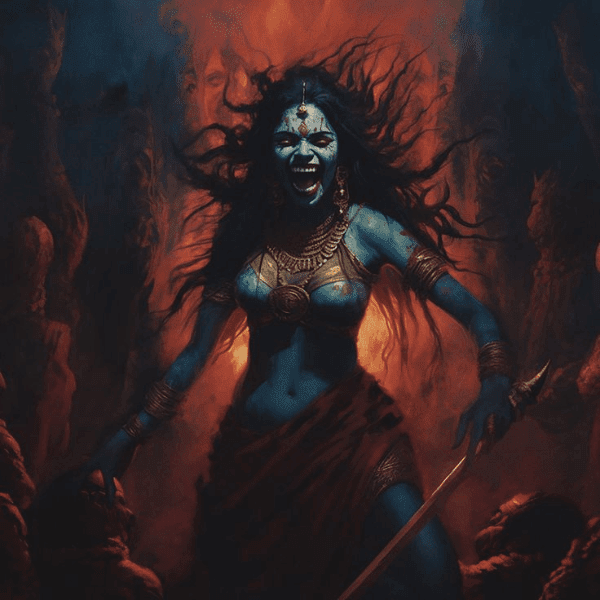
Her destructive power serves to break down the ego and illusions, leading to spiritual growth and liberation. Her symbols include the sword, a tool of liberation, and the severed head, representing the ego that must be cut off to attain enlightenment. Kali, in her fierce love and terrifying power, invites us to face our fears and embrace transformation.
Let transformation begin—our Crow & Raven Necklaces reflect Kali’s dance between chaos and rebirth.
Rituals, Archetypes & Energy Work
To activate your dark feminine energy, begin with dark feminine rituals: mirror work, ancestral meditation, sensual embodiment, shadow journaling. Explore dark feminine archetypes not to label yourself—but to remember the aspects you’ve been told to suppress.
Dark feminine energy is magnetic, mysterious, deeply rooted in feeling, and almost always misunderstood.
It is not better or worse than light feminine energy—it is the other half. Yin to yang. Ice to flame.
Wondering how to be a dark feminine? Start by stopping the performance. Be still. Be aware. Feel everything. Then choose from power, not pain.

Final Words for the Wild
The dark feminine personality type isn’t about chaos. It’s about sacred reclamation. It’s about owning what was forbidden, forgotten, or feared.
So if you feel the pull of dark feminine characters, mythic goddesses, or dark feminine names whispered by the moon—don’t resist it. Step into it.
You were never meant to stay small.
Explore dark feminine necklaces, designed as dark feminine energy symbols to wear against your pulse.

Referances:
- sandplay.org: “The Dark Goddess: An Encounter with the Dark Feminine”
- Jstor: “The Goddess Myth in Contemporary Literature and Popular Culture: A Feminist Critique”
- The Collage of Psychic Studies: “Meet the Dark Goddesses”
- Academia: “Endarkenment: The Dark Goddess in Art and Myth”
- Paganista: “Kali“



